Gladiator fights were abolished in 404 AD
The gladiatorial activity was abolished in 404 by Honorius I. Already the emperor Constantine did everything possible to put an end to the barbarism of the Colosseum, however it was only in 404 that the shows ended completely.
The battles were abolished following an accident in which the Greek monk Almacchio (or Telemachus) was killed, who went down to the Arena to protest against these abominable tortures. But who were the gladiators really? What really happened in the Colosseum in Rome and in the other amphitheaters of the Roman Empire and why did these shows get abolished after so many deaths?
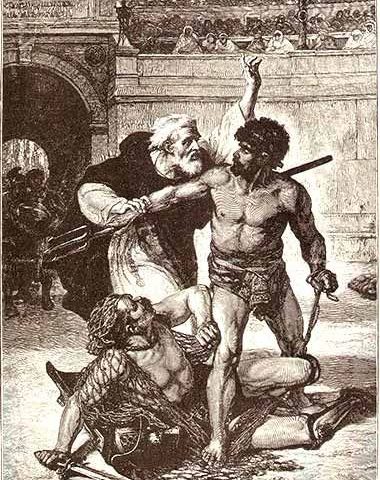
Did you know? Gladiator fights were abolished in 404 AD. after the killing of a monk.
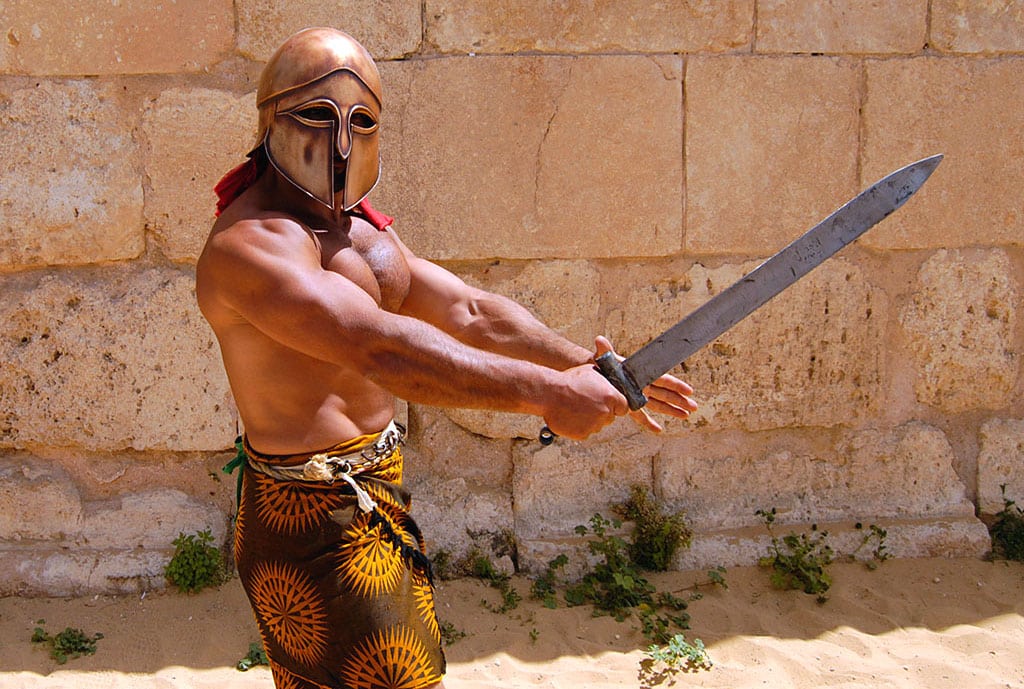
Theodoret narrates (History Eccl., V, 26) that a certain monk Telemachus would have come from the East to Rome to put an end to the cruelty of gladiator fights. One day during a show he went down in the middle of the arena among the fighters, trying to stop the massacre, but the indignant spectators stoned him. The emperor Honorius, informed of this, numbered Telemachus in the number of glorious martyrs, and forbade those shows.
In some codes of the Geronimian Martyrology a martyr Almachius is remembered on 1 January, who, having said: «Today is the eighth of the Lord: cease from the superstitions of the idols and from the unclean sacrifices», he was killed by gladiators by order of Alypius, prefect of the city.
Despite the differences in the name and some peculiarities, however easily overcome, there is no doubt that it is the same character, whose story would thus be related by two independent sources. Theodoret perhaps refers to the popular oriental tradition, while Geronimiano used a passion now lost.
From the reference to the prefect Alipius, contained in this, it would seem that the martyrdom of Almachio took place in 391: but this does not agree with the news of Theodoret who speaks of the emperor Honorius. Someone therefore thought of explaining the contrast by assuming that Alipius had been prefect a second time under Honorius or that the emperor, remembering the sacrifice of Almachius, had decided to suppress the gladiatorial games.
These, in fact, were still in use in 403, as Prudentius begged the emperor to suppress them (Contra Symmachum, II, 1414-1429), and only after 410 did the games cease completely. Even the diversity of the name in the two sources has made us doubt the historical existence of the martyr, but the objections raised do not seem peremptory; there is no lack of good reasons to believe with the Geronimian Martyrology that the real name of the saint was Almachio.
The name “gladiators” comes from gladius, the sword of the past Roman legionary that also used the wrestlers. The practice of gladiatorial duels comes from the Etruscans and, like many other aspects of Etruscan culture, this too was adopted by the Romans.
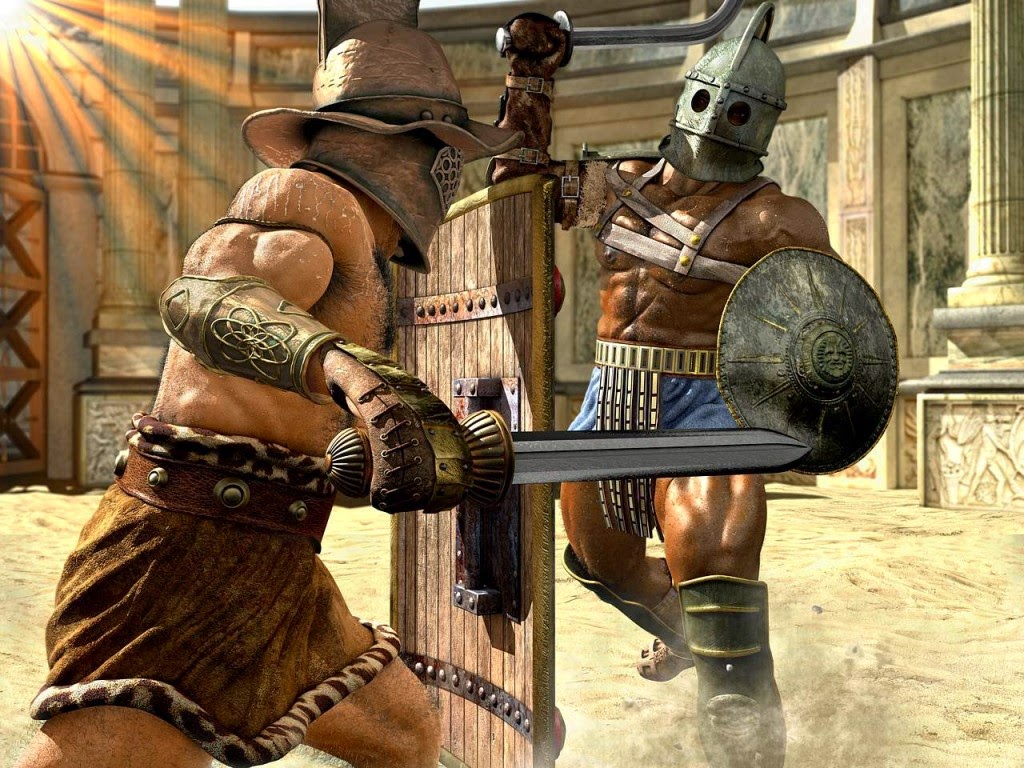
The gladiators were on average between 20 and 35 years old (the majority, however, 30), in line with the life expectancy of the time. And the height was also in line with the era: 168 cm.
The first gladiator show probably took place in 264 BC. In 105 BC. the games became public.
The fighters could be real professionals, new inexperienced gladiators, convicts, criminals, slaves, galley slaves, prisoners of war, Christians, or free men, without distinction of race or sex (gladiatrix fights, extremely rare, were in any case always the most requested ones).
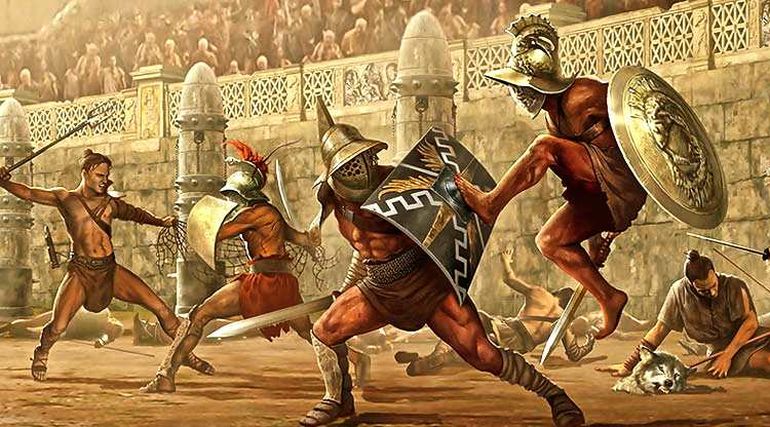
Gladiators were trained in special schools. The most prestigious was the Ludus Magnus.
The gladiators stayed in cells arranged according to an internal hierarchy of the school. Together with a magister, the fighters were judged on their ability and physical prowess and assigned to different categories.
They underwent rigorous daily workouts and a diet based mainly on vegetables, legumes, honey and dairy products. Before entering the arena they ate a cake with honey to have more energy.
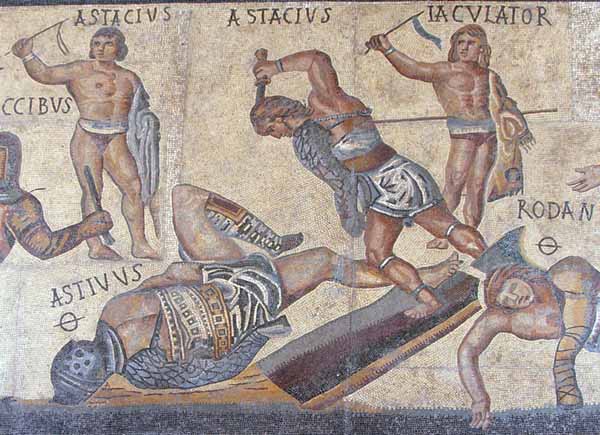
Games in the arena always began with a parade. The financier was the first to enter, along with attendants holding placards with the day’s schedule. The slaves carried the weapons of the combatants. Then it was the turn of the gladiators and those sentenced to death. After greeting the emperor, the fighters went to get their weapons.
The main categories of Gladiators were: the Mirmillone: with heavy armor consisting of a helmet and integral shield. II Thrace: gladiator who possessed a curved sword, with a small and light shield. The Sector: said pursuer. He was equipped with heavy armor, with a padded helmet. He was so called because he chased the opponent.
The retiarius: used a net with weights, a dagger and a trident. Among the gladiators he was the lowest class because he fought only in the tunic. Among the people, however, he was much loved because people could see his face.
gladiator who had defeated his opponent turned to the audience of the amphitheater to ask his fate and the crowd, with a hand sign decided for death or life: the thumb pointing upwards, “mitte” (except ) meant he was to live and the thumb pointing down, “jugula” (death) meant he was to die. In the end, however, it was the emperor or whoever organized the show in question who with his thumb determined the fate of the defeated gladiator.
Each gladiator killed cost the organizer of the show a very high sum and, clearly, they did not easily ask for their deaths.
Gladiator fights were inspired by mythological episodes; grotesque situations were also staged to amuse and excite the crowd at the same time.
Then there were the venationes, which were fights between gladiators and animals.
Among the animals that appeared in the venationes are lions, tigers, leopards, elephants, bears, deer, wild goats and camels. Respected for its ferocity, the lion was extremely popular during venationes and gladiatorial shows. Pompey set a gruesome record by having as many as 600 lions killed.
The gladiator had a difficult and very risky life. He fought for life, for freedom and for glory and the Roman people appreciated and were fascinated by the strength and courage of the winning gladiator who became a famous character.
Convicts and prisoners of war, particularly battle-hardened for having survived years of struggle and suffering, were much sought after for the fight. Very often they were originally from distant lands (for example Numidia, Thrace, Germany), and they willingly offered themselves, so that they could progress in this career.
Most of the gladiators were in fact slaves or ex-slaves, but also, as mentioned, free-born individuals who fought under contract with a “manager”. They were often regarded as prostitutes, actors and pimps, and generally outcasts. Often the definition of “infames” (people of bad reputation) accompanied them.
An article in Focus reports that based on a study, the analysis of the wounds found on the skeletons seems to confirm what historians have been saying for some time: gladiator fights weren’t simple massacres, made up of blind violence and mutilations, but they were real wrestling matches, with precise rules whose application was ensured by the presence of referees.
Although the wrestlers used sturdy helmets, wounds were found on the remains of 10 skulls, the cause of which can be traced back to a blow inflicted with a hammer. According to the researchers, these remains belong to fighters who, after losing the match, were put to death by the public or notables, as was the custom at the time. From the reconstruction it seems that these gladiators were taken out of the arena still alive and were killed behind the scenes with a hammer blow inflicted by an executioner. A truly inglorious end.
The number of gladiatorial shows increased enormously during the Empire.
The Flavian dynasty, which began with the emperor Vespasian, had the largest and most famous amphitheater in the world built, the Flavian amphitheater, later known from the Middle Ages as the Colosseum. In the 4th century, Emperor Constantine I, after embracing the Christian faith, forbade them.
However, the bad reputation benefited the gladiators, real sex symbols of their time. Also loved by the women of the nobility, who were willing to do anything for the love of a gladiator. Like Eppia, wife of a senator, who abandoned her husband to run away with a hero of the arena.
